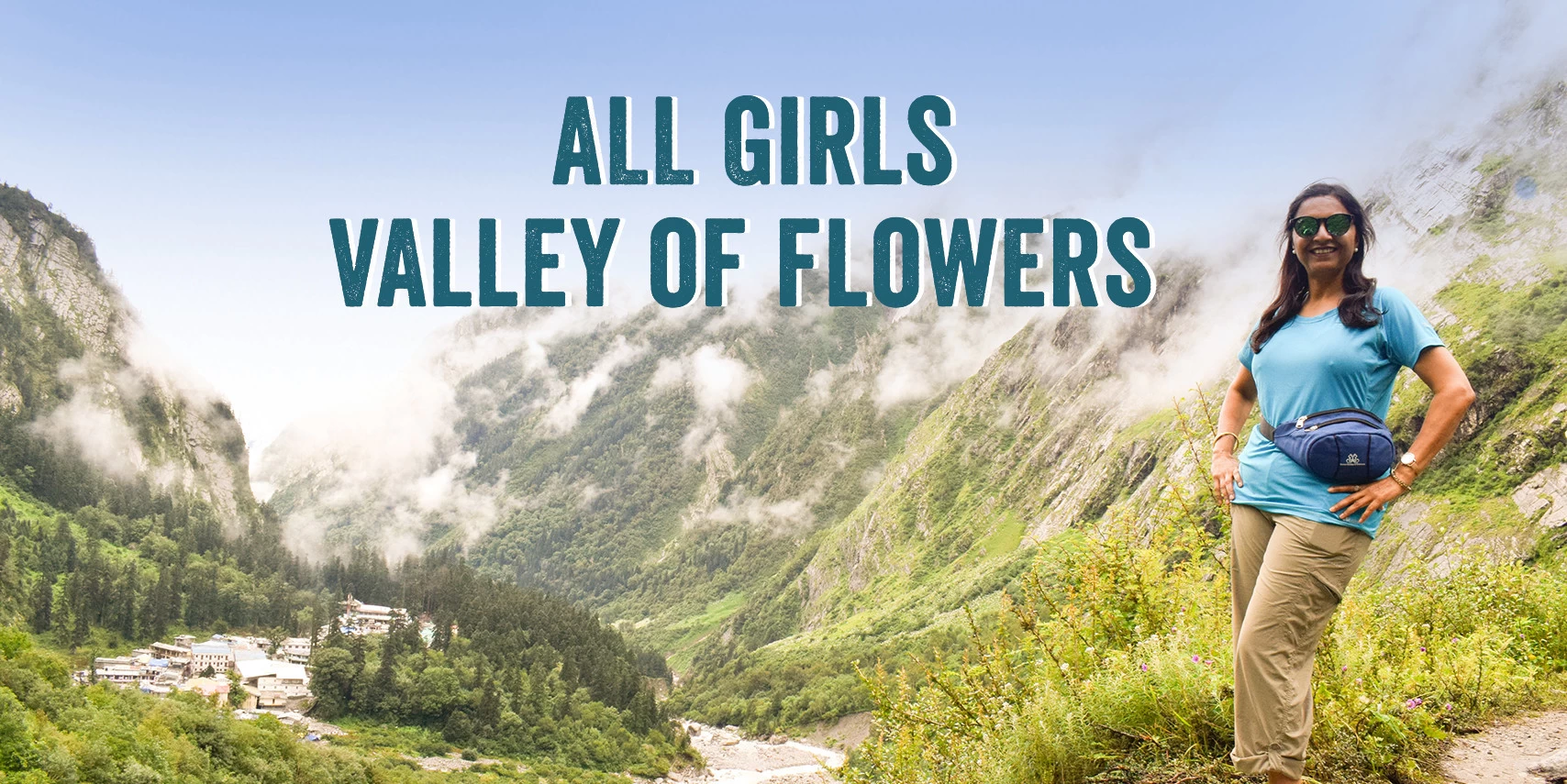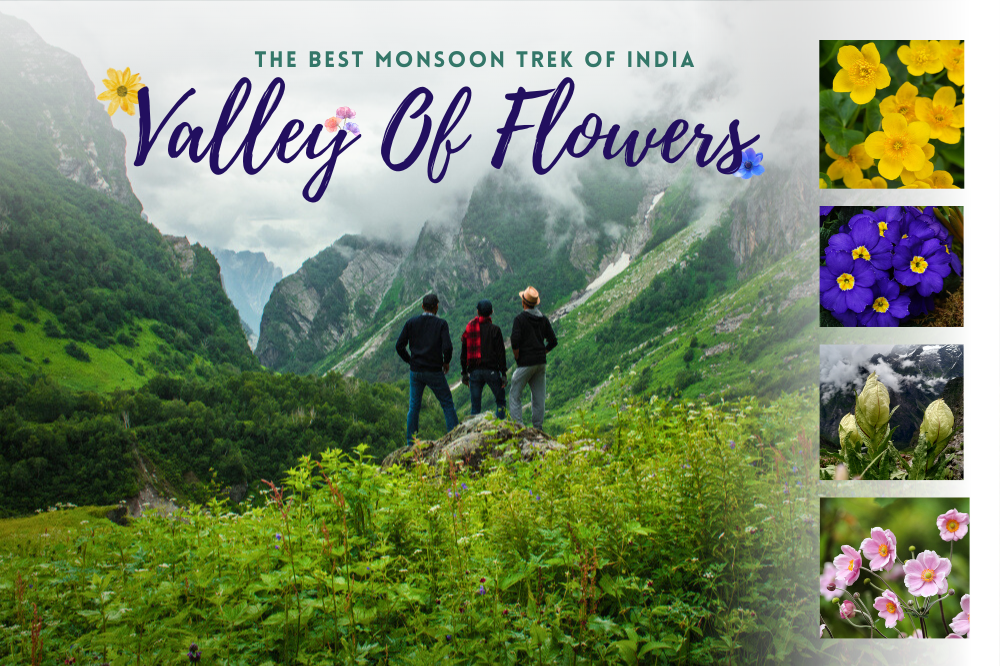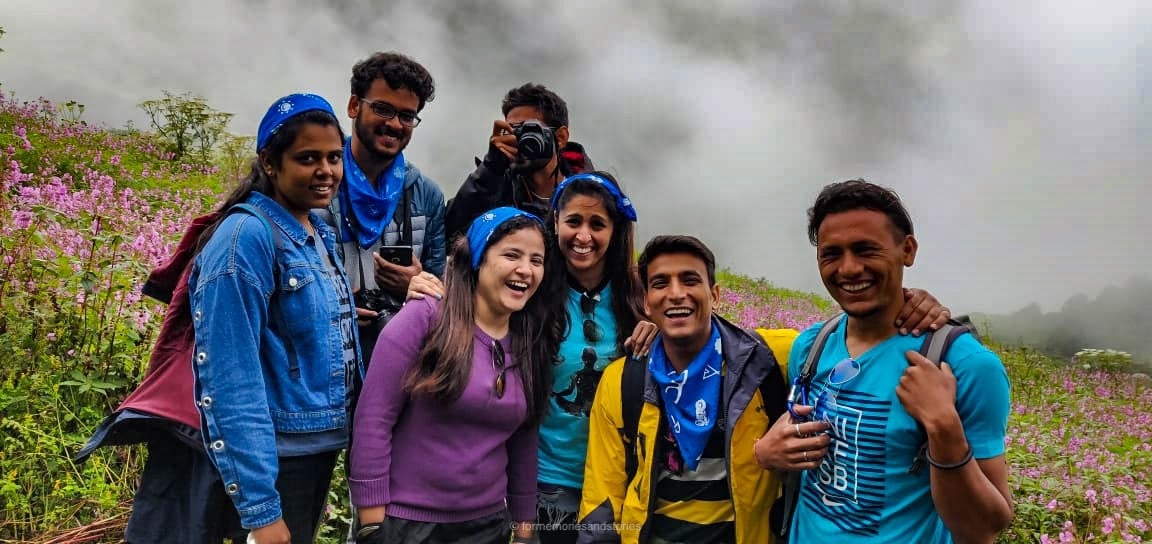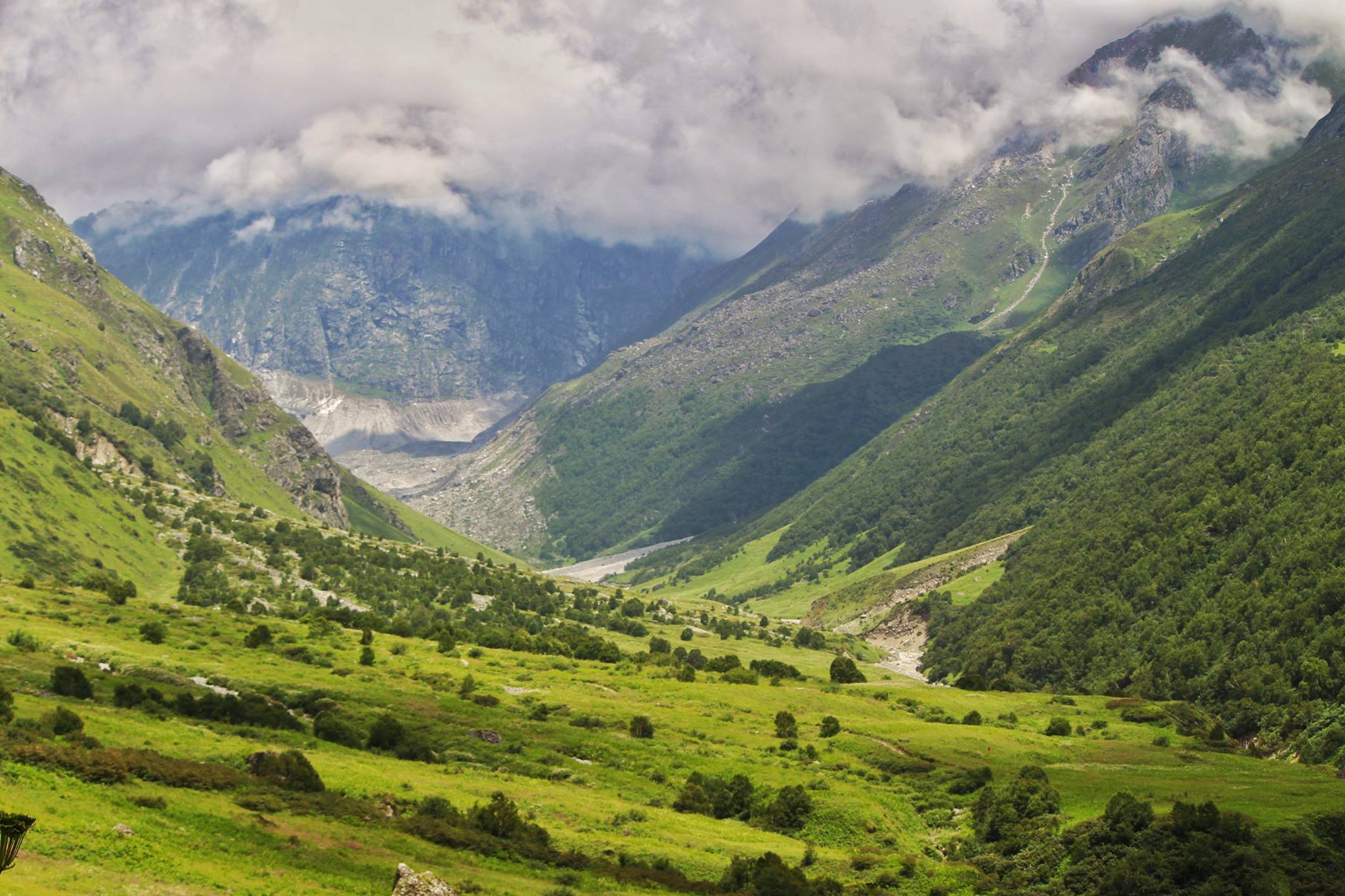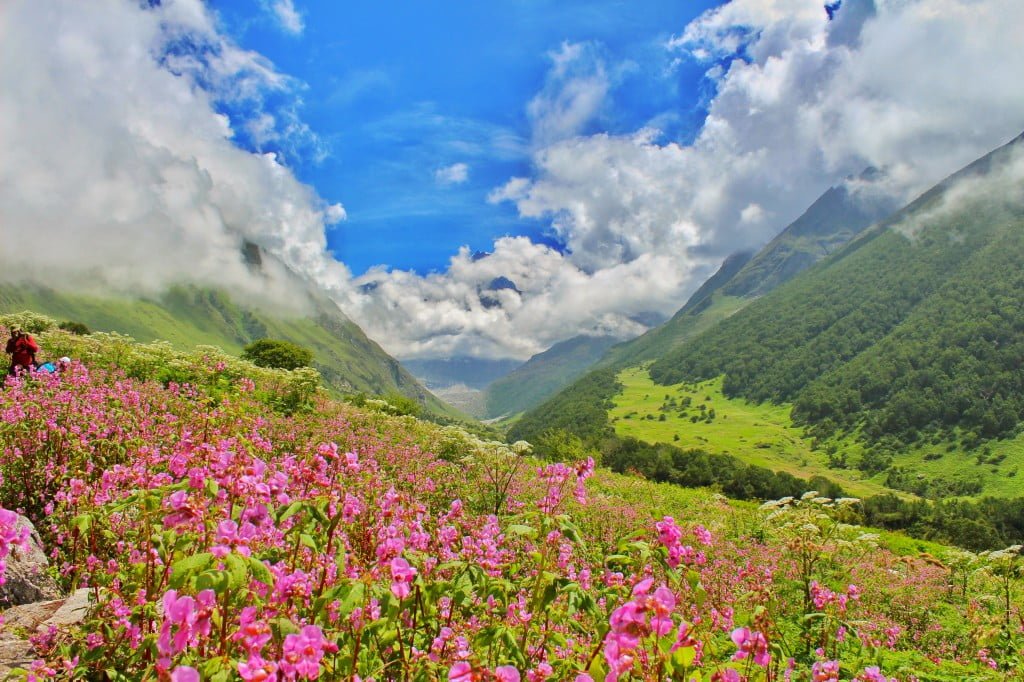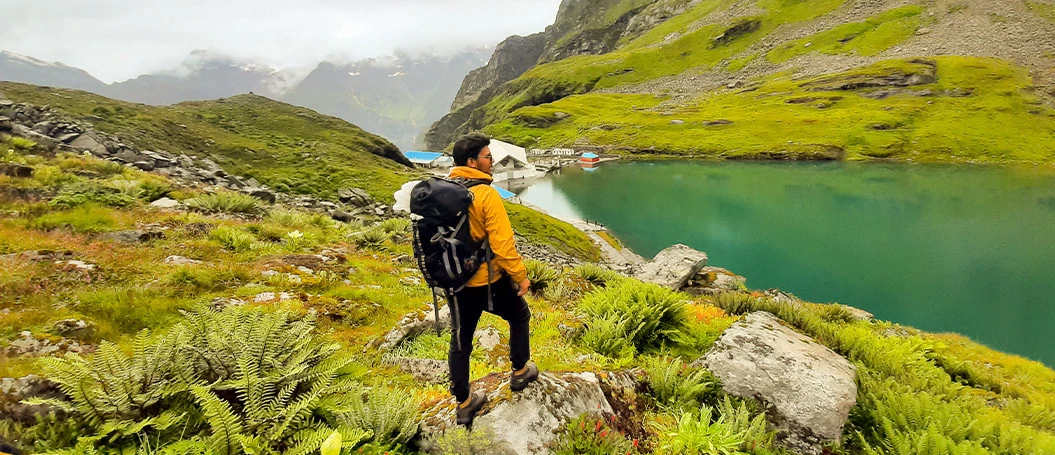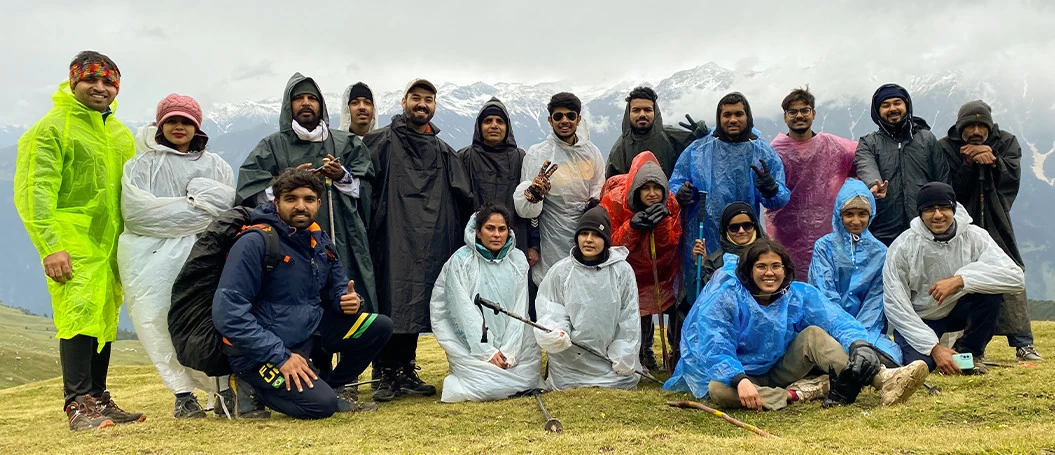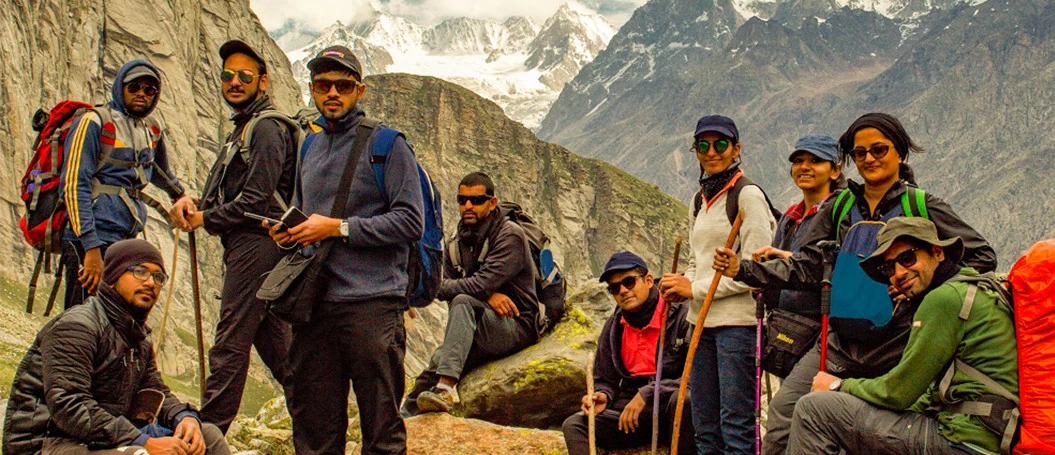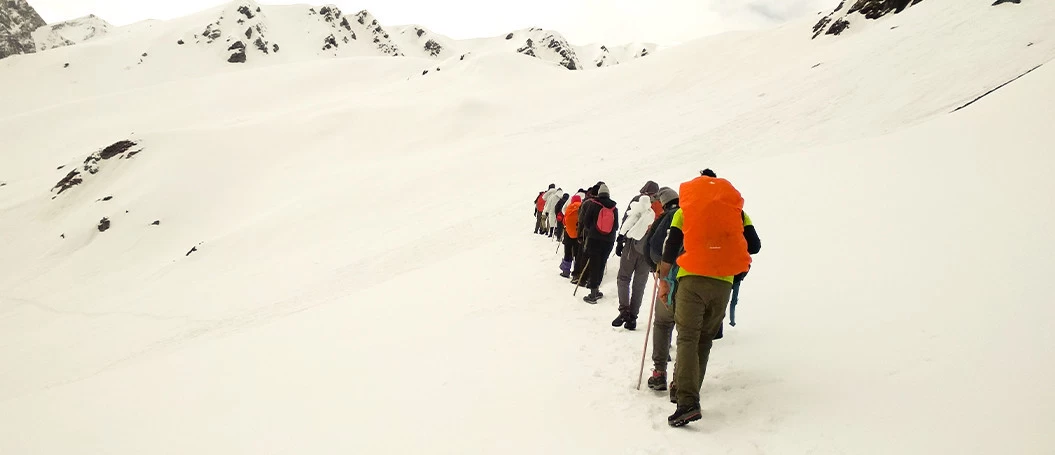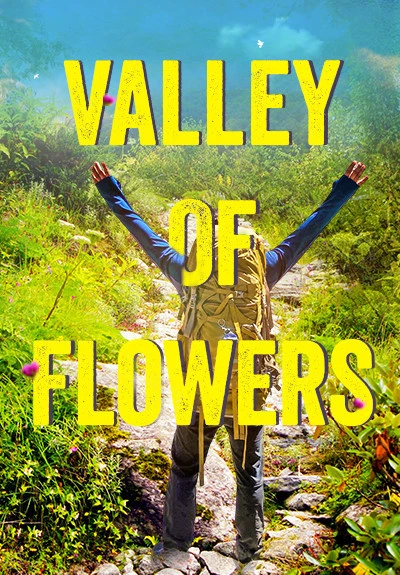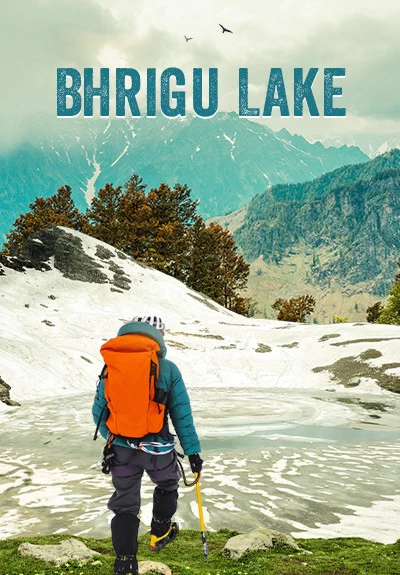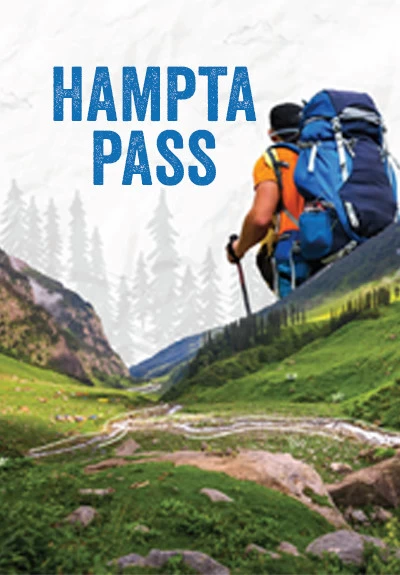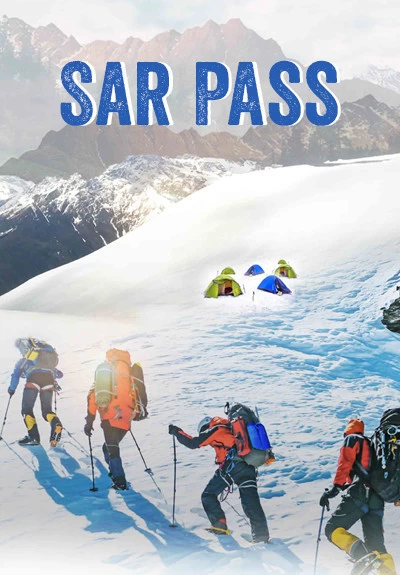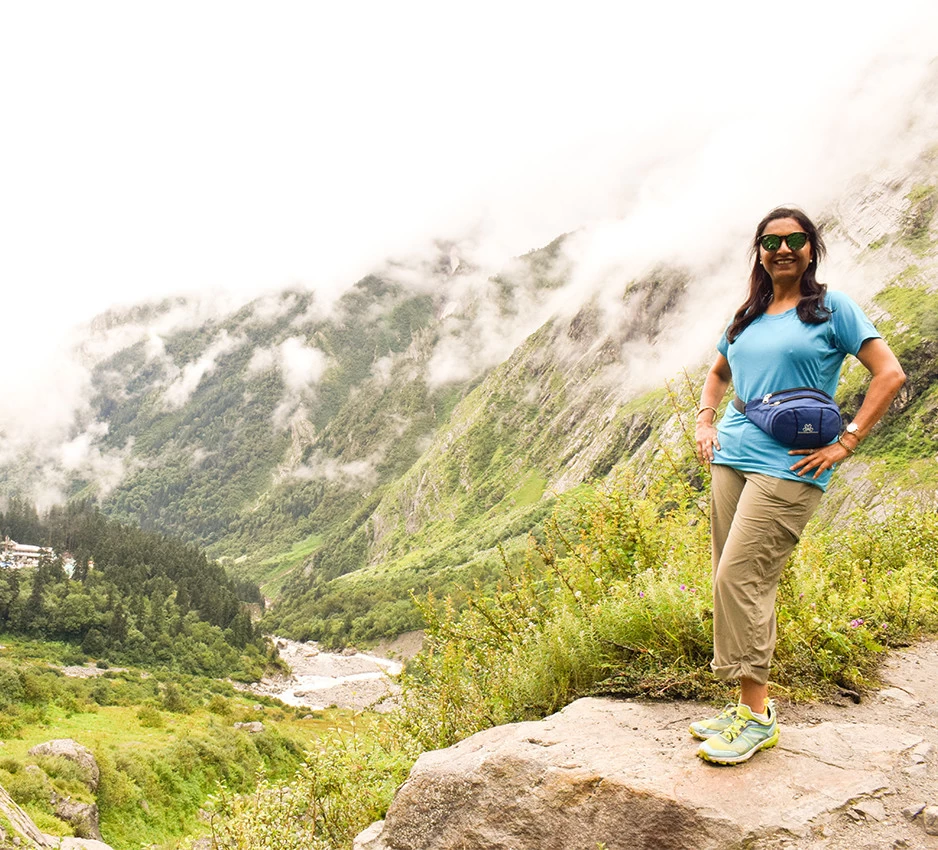
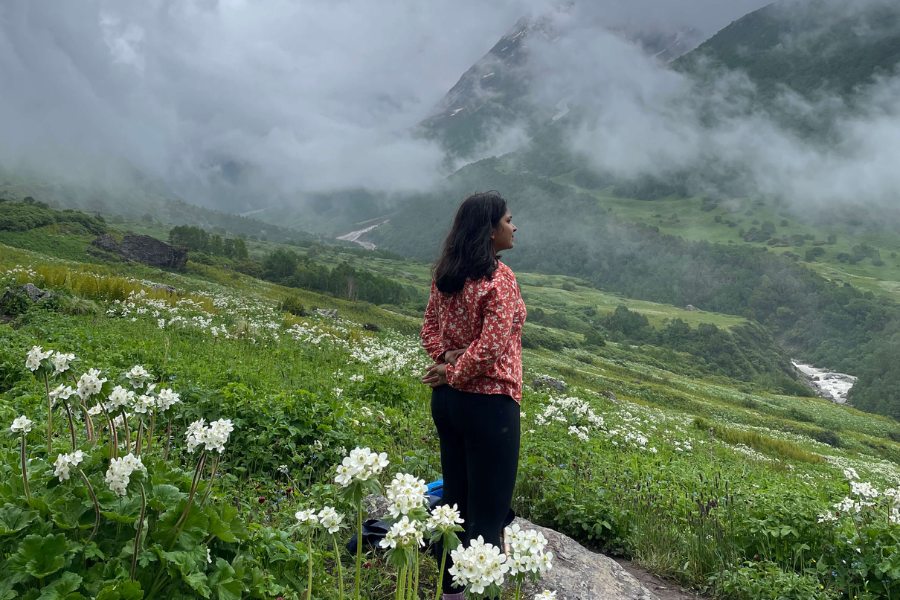
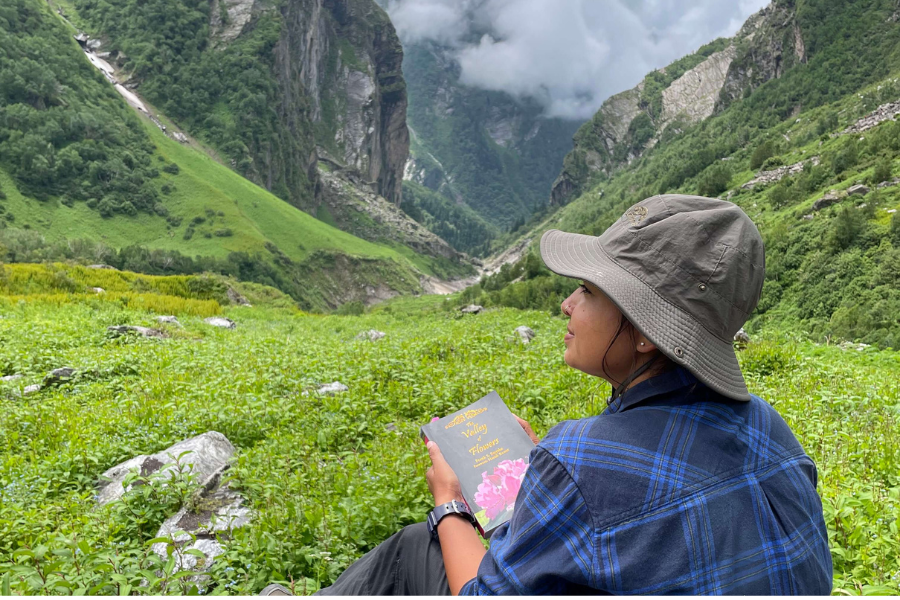
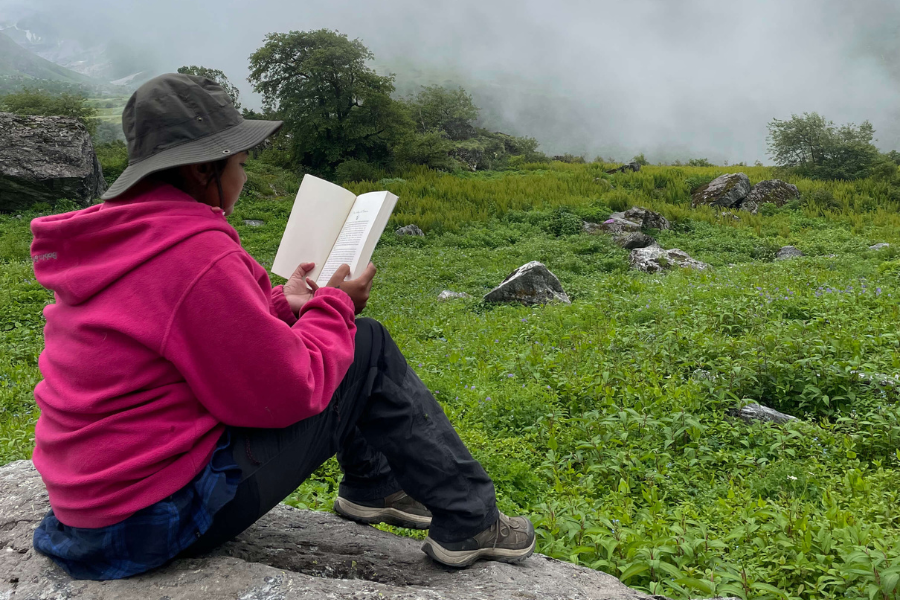
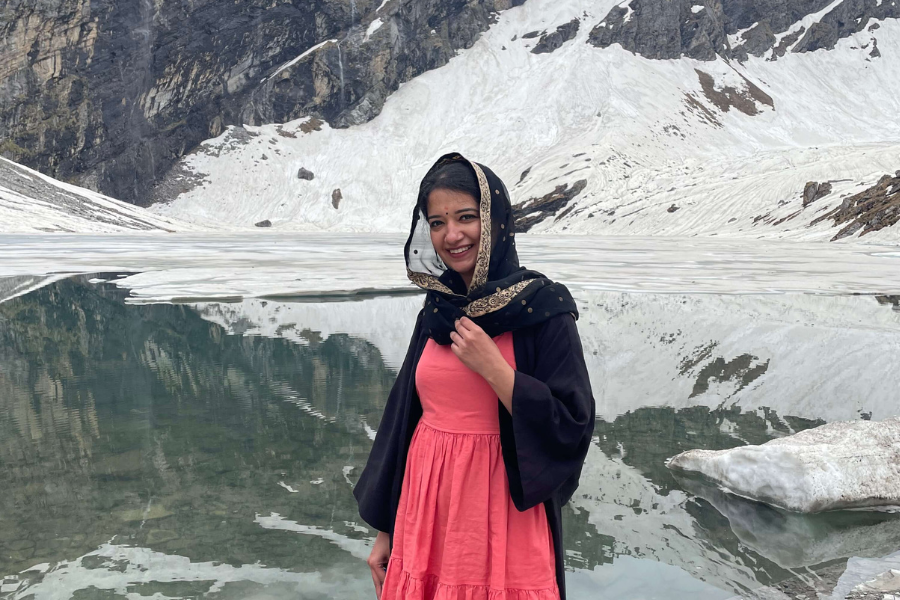
All Girls Trek to Valley of Flowers
Details
Inclusions
Safe Travel
Flexible Cancellation
Easy EMI
Certified Captains
24/7 Support
Overview
In this Valley of Flowers trek, you'll embark on a journey from Rishikesh to Joshimath/Pipalkoti, with the latter located at an altitude of 6,200 ft. The scenic drive on the Badrinath Highway lets you witness the beauty of the Panch Prayags, along with the picturesque Chamoli and Srinagar districts of Uttarakhand unfolding with every turn. You'll be spending a night in Joshimath/Pipalkoti before starting the trek. The next day, you'll drive to Pulna village, which is the starting point for the Valley of Flower trek. The gradual ascent on rocky paths will lead you to Ghangaria village after almost 5 hours of trekking, during which you will attain an altitude of 10,000ft. All along the Pushpawati River will be flowing alongside you on the 9-kilometer uphill route. As this trek route has many shops and dhabas, you'll have plenty of resources to get refreshments from and rest between treks. There are stairs for convenience as many pilgrims take this route to go to the Hemkund Sahib. Upon reaching the village, you can stay at guest houses.
The distance from Ghangaria to the Valley of Flowers is 4 Kilometers, and this part of the trail in the Valley of Flowers trek is easy because of the flat walk towards and through the valley. In this itinerary of the Valley Of Flowers trek, you'll attain an altitude of 15,200 ft spread across a stretch of 42 km. During the course of five days, your trekking hours last up to 6 hours, and you gain an average altitude of 2000ft every day. The valley stretches like a colorful carpet that is a blend of different hues, with green, yellow, and pink being the most prominent ones. The mountains overlook the valley, adding more charm to the picturesque scenery in front of you. Colorful blossoms of more than 300 species spread across the valley, ending only after 5 kilometers at a glacial point. The Valley of Flowers trek is an easy to moderate trek that offers rare access to the Himalayan ranges in Uttarakhand. The valley itself is about 2 km wide and 8 km long. The temperature on the Valley of Flowers trek usually stays somewhere between 5 to 20 degrees Celsius, with chances of rainfall while trekking as the clouds are almost thick over the valley. The trek from Ghangaria to Hemkund Sahib is the hardest part of the trek, making the difficulty level of the Valley of Flower trek increase from easy to moderate because of the altitude gain and steep ascents. However, the peaceful chants at Hemkund Sahib make all the efforts more worth it. The beauty of the Valley of Flowers treks lies not just in the flowers but also in the fact that it attracts women from all over the world. The best time to do the Valley of Flowers trek is when spring arrives because only then do you get to see most of the flowers that adorn the vast expanse of Greenlands, making the trekking experience worth it.
The valley of flowers trek comes under the easy to moderate category when it comes to grading the difficulty level and is considered to be a perfect trek for beginners and even a great trek for families. The hardest climb is the one to Hemkund Sahib Gurudwara which is the highest Gurudwara in the world and one of the most important pilgrim sites in Uttarakhand. The valley itself stretches to a length of almost 10 kilometers, with colors of rainbows speckled across the patchwork of grass, compelling you to stop and look at them closely. The scent of flora lingers in the air and is hard to miss as you keep traversing through the valley, walking on the narrow path that cuts across the flower beds to make way.
In this valley of flower trek itinerary, we start our journey with an 8-hour drive from Rishikesh to Joshimath which is the base camp for the Valley of flowers trek. Though the drive can seem strenuous, the beautiful scenery that accompanies you provides you a glimpse at four of the Panch Prayag which are five holy sites of the confluence of the river Ganga namely - Devprayag, Rudraprayag, Karnaprayag, and Nand Prayag will surely this drive a visual treat for your eyes. Upon reaching Joshimath, we will check into our lodgings and retire for the night. The next day, we drive from Joshimath to Pulna village which is the starting point for the valley of flower trek. Upon reaching there, we start trekking to Ghangaria. We gradually ascend on a stretch of a 9-kilometer route with the Pushpawati river flowing alongside. The trek is considered to be of the easy to moderate category with the uphill route consisting of stone-carved paths and steep ascents testing your endurance slightly as you walk up to your next campsite, Ghangaria village which is located at an altitude of 10,000ft. The trail is lined with many small dhabas so you will have plenty of resources to refill your water bottles and get snacks as you move forward. After walking for almost half of the distance, you will be able to see the Hathi Parvat ranges in front of you. From there on the climb is steep and you’ll be required to maintain proper footing until you reach your campsite.
The next day you will be able to traverse through the valley of flowers. But before that, you have to cover at least a stretch of 4 kilometers of land. As you keep walking for at least 10 minutes, you will stumble upon the Laxman waterfall which gushes streams of sparkling water, the sight of which will surely refresh you. After a few minutes, you will reach the forest check post, from where you can buy tickets. The check post signifies your proximity to another marvel of nature in the form of a wooden bridge that is perched upon the Pushpavati river. No sooner after you have crossed the bridge, mountains will start peeking from behind. Every direction that you take will seem like a natural paradise because all colors of the rainbow are now on the ground in the form of blooming flowers. The difficulty level of the valley of flowers trek becomes easier here as you have to walk flatly throughout the valley. Adorning the Himalayan peaks with different hues belonging to native flowers like poppies, Himalayan roses, geraniums, etc. The flowery carpet will end after a 5-kilometer stretch at a glacier but the sight of the majestic Himalayan peaks of Nilgiri Parvat, Bhyundar Khal, Rattan, Gauri Parvat, etc still make the view picturesque with a cold stream of water flowing throughout. Eating and camping in the valley aren’t allowed so you will have to head back to Ghangaria and retire for the night.
The hardest part of the valley of flowers trek commences the next day as you head out for Gurudwara Hemkund Sahib, nestled at an altitude of 14,107 ft, it is the highest Gurudwara in the world. The six-hour-long trek from Ghangaria to Hemkund Sahib is challenging in more than one way, the first one being that in a matter of a few hours, you gain an altitude of 5,000ft and the scenic views are replaced by steep descents making the climb rather strenuous. As you keep walking, you will be able to look over the entire valley of flowers and soon a cascading waterfall will come into view. You’d be able to feel the low oxygen levels as you gradually ascend, and that is your cue to keep drinking water as much as you can. After traversing on stone-paved pathways and stumbling upon melting glaciers, Gurudwara Hemkund Sahib will bless you with the Hemkund lake right by its side, mirroring its pristine beauty. All your efforts will feel worth it once you have a cup of hot piping chai and a mouthful of khichdi that is distributed during the Langar.
As you stroll on the premise, you’d feel a sense of peace that you won’t find anywhere else. The lake, which is formed by the melting glaciers of Hathi Parvat and Saptarishi peaks, reflects the grandeur of the mountain as well. When the skies are crystal clear, you get a view of the Saptarishis peaks beckoning you closer while on the lakeside, rare flowers like the Brahma Kamal add more charm to the beauty of Hemkund lake. On a clear day, you will be able to glimpse at the Himalayan peaks of Nilgiri Parvat, Bhyundar Khal, and Gauri Parvat as well. A temple dedicated to Laxman, Lord Rama’s brother is also situated near the lake and you can pay your respects there as well. You will soon have to descend and the 7-kilometer walk can put a strain on your muscles. The next day is relatively easier as the descent to Pulna village would feel easier than the steep uphill climbing of the previous day. The trail is lined with enough dhabas and snack shops making it even easier to descend and in no time you’d have reached the base from where we’d be driving to Joshimath commencing our valley of flowers trek. Being one of the most well-known treks in the Indian Himalayas, the Valley of Flowers trek is quite safe. It has well-laid trails frequented by pilgrims. However, one needs to be careful on the slippery sections of the trail, especially during the rainy season.
Gallery




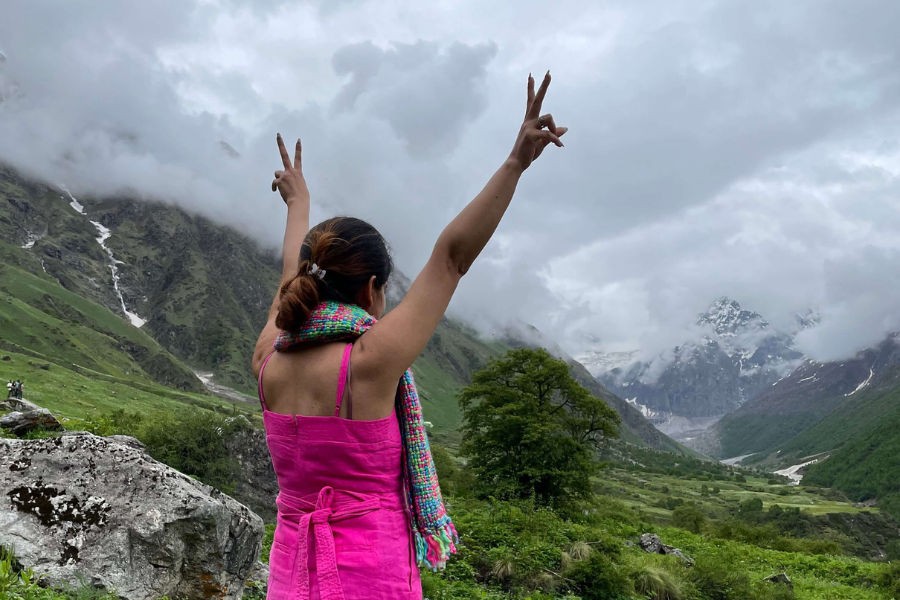
Itinerary
1
Day
Rishikesh to Joshimath/Pipalkoti (253 Kms, 8 Hrs Drive)
2
Day
Joshimath/Pipalkoti to Pulna (22 Kms, 1 hour Drive) | Trek to Ghangaria (9 Kms, 5 Hrs trek)
3
Day
Ghangaria to Valley of flowers | Back to Ghangaria (10 Kms, 7 Hrs trek)
4
Day
Ghangaria to Hemkund Sahib (14 Kms, 9 Hrs) | Back to Ghangaria
5
Day
Ghangaria to Pulna (9 Kms, 5 Hrs) | Drive to Joshimath/Pipalkoti (22 Kms, 1 hour Drive)
6
Day
Joshimath/Pipalkoti to Rishikesh (253 Kms, 8 Hrs drive)
Age Limit (Trip Wise)
Weekend
Getaways
18-38
Himalayan
Treks
18-48
Backpacking
Trips
18-40
Biking
Trips
18-45
Customized
Trips
No Limit
Inclusions & Exclusions
| Inclusions | Exclusions |
Accommodation: 2 Nights of Accommodation in a hotel in Joshimath, and 3 Nights of Accommodation in a hotel in Ghangaria on a Triple/Quad Sharing basis. Transportation: Surface transfer from Rishikesh to Rishikesh Meals: All Veg meals from Day 1st Dinner to Day 6th Morning Tea Snacks: Morning / Evening Tea / Coffee with light snacks. Trek Leader: Qualified and Experienced Female Trek leader and support staff. Permits: All necessary fees and permits. Safety Equipment: Basic First Aid kit with Oximeter and Oxygen Cylinder. Guide ratio: 1:10 | Insurance of any kind. Any fees and permits (For Foreigners). Unscheduled delay due to a landslide. Charges for Hot water at Ghangaria (Rs 60 per bucket) Cost Escalation due to “Force Majeure and Evacuation charges”. Anything not mentioned explicitly in the above program. Note: You can apply for travel insurance prior to the trek. |
Cancellation Policy
| Upto 21 days | 20-15 days | 14-8 days | 7-0 days | |
| Batch Shifting | ||||
| Cancellation Charge | Free Cancellation | 25% of the Trip Amount | 50% of the Trip Amount | 100% of the Trip Amount |
| Booking Amount | Refunded in mode of Credit Note | Adjusted in Refund Deduction | Adjusted in Refund Deduction | No Refund |
| Remaining Amount | Full Refund (minus) booking amount | Refund (minus) 25% of the trip amount | Refund (minus) 50% of the trip amount | No Refund |
Payment Policy
| Upto 21 days | 21-15 days | 14-08 days | 07-03 days | |
|---|---|---|---|---|
| Booking Amount | ||||
| 50% Payment | Optional | Compulsory | ||
| 75% Payment | Optional | Optional | Compulsory | |
| 100% Payment | Optional | Optional | Optional | Compulsory |
Things To Pack
Rucksack:
You must pick a good quality backpack with a comfortable fit and straps that won’t give you shoulder pain. You can check out your nearest Decathlon store for a good trekking backpack.
You must pick a good quality backpack with a comfortable fit and straps that won’t give you shoulder pain. You can check out your nearest Decathlon store for a good trekking backpack.
Day Bag / Day Pack:
When you head towards the summit, you are required to carry only a few necessary items and for that, you need a day backpack as you will leave your bigger one on the campsite.
When you head towards the summit, you are required to carry only a few necessary items and for that, you need a day backpack as you will leave your bigger one on the campsite.
Hiking Shoes :
Durable footwear designed for rugged terrains.
Durable footwear designed for rugged terrains.
Floaters or Sandals:
Although the entire trek requires a good quality shoe, you still need to let your feet breathe to avoid chafing and blisters. When you are at the camp, a good pair of sandals and floaters will help you to move freely.
Although the entire trek requires a good quality shoe, you still need to let your feet breathe to avoid chafing and blisters. When you are at the camp, a good pair of sandals and floaters will help you to move freely.
Tees / Tshirts:
You must keep at least three pairs of quick dry tees so that you can wash them in between stops for proper hygiene.
You must keep at least three pairs of quick dry tees so that you can wash them in between stops for proper hygiene.
Poncho:
A poncho is an evolved form of a raincoat that provides coverage to your body as well as your bag and ensures total water protection from rain.
A poncho is an evolved form of a raincoat that provides coverage to your body as well as your bag and ensures total water protection from rain.
Quick Dry Towel:
A quick dry towel will help in maintaining proper hygiene. It must dry quickly because the wet fabric will only increase the chance of bacterial growth.
A quick dry towel will help in maintaining proper hygiene. It must dry quickly because the wet fabric will only increase the chance of bacterial growth.
Sanitizer:
Essential for maintaining cleanliness while trekking.
Essential for maintaining cleanliness while trekking.
Sun Cap / Hat:
A lightweight sun cap with side flaps is perfect to keep your head cool and avoid sunburns on a sunny day.
A lightweight sun cap with side flaps is perfect to keep your head cool and avoid sunburns on a sunny day.
Sunscreen SPF 40+:
To avoid sunburns and chafing, you need to put on sunscreen as well as cold cream.
To avoid sunburns and chafing, you need to put on sunscreen as well as cold cream.
Water Bottle (Re-usable):
Hydration is extremely important when it comes to trekking. Carrying a water bottle that you can refill with Himalayan water is a must.
Hydration is extremely important when it comes to trekking. Carrying a water bottle that you can refill with Himalayan water is a must.
Personal Toiletries:
A bag with all your essentials including napkins, toothpaste, sanitizers, paper soap, etc should be carried in a ziplock bag.
A bag with all your essentials including napkins, toothpaste, sanitizers, paper soap, etc should be carried in a ziplock bag.
Personal Medication / First Aid:
A few cuts and bruises are almost inevitable when you are on a trek so carrying a medical kit with bandages, Dettol, etc is necessary.
A few cuts and bruises are almost inevitable when you are on a trek so carrying a medical kit with bandages, Dettol, etc is necessary.
Sun Glasses / Reading Glasses:
Photochromatic glasses are specs that are designed to transform into anti-glare shades depending upon exposure to the sun. They are good when it comes to eye protection but one can also opt for clip-on glasses etc.
Photochromatic glasses are specs that are designed to transform into anti-glare shades depending upon exposure to the sun. They are good when it comes to eye protection but one can also opt for clip-on glasses etc.
Charger:
To keep your electronic devices powered during the trip.
To keep your electronic devices powered during the trip.
Power Bank:
Ensures your devices stay charged when there are no outlets.
Ensures your devices stay charged when there are no outlets.
Personal Documents & ID's:
Identification proofs like Aadhar Card, Drivers License.
Identification proofs like Aadhar Card, Drivers License.
Laundry Bag (Waterproof):
In case your clothes get wet or your garments don’t dry, you can carry them in polythene. However, make sure that all the plastic that you are carrying into the woods leaves with you. Don’t litter in the mountains.
In case your clothes get wet or your garments don’t dry, you can carry them in polythene. However, make sure that all the plastic that you are carrying into the woods leaves with you. Don’t litter in the mountains.
Track Pants:
A good pair of track pants made of polyester will let your skin breathe. They’re lightweight, dry easily, and comfortable to walk around in. You can easily avoid chafing and rashes by investing in a good pair of track pants.
A good pair of track pants made of polyester will let your skin breathe. They’re lightweight, dry easily, and comfortable to walk around in. You can easily avoid chafing and rashes by investing in a good pair of track pants.
Trekking Shoes:
A good trekking shoe is comfortable, provides ankle support, and has a good grip as well. They shouldn’t be chunky, instead, they should be lightweight and sturdy.
A good trekking shoe is comfortable, provides ankle support, and has a good grip as well. They shouldn’t be chunky, instead, they should be lightweight and sturdy.
Cotton Socks:
Cotton socks are extremely comfortable to move around in and are lightweight as well which is why you can always count on a good pair of cotton socks while trekking. However, keep in mind to change them and avoid wearing them when they are wet.
Cotton socks are extremely comfortable to move around in and are lightweight as well which is why you can always count on a good pair of cotton socks while trekking. However, keep in mind to change them and avoid wearing them when they are wet.
Woolen Socks:
A good pair of woolen socks, especially merino, are comfortable, limit odors and provide adequate insulation from the cold so you can wear them at night.
A good pair of woolen socks, especially merino, are comfortable, limit odors and provide adequate insulation from the cold so you can wear them at night.
Woolen Gloves:
Insulated gloves help in maintaining proper body heat in your hands and also provide a better grasp on trekking poles.
Insulated gloves help in maintaining proper body heat in your hands and also provide a better grasp on trekking poles.
Main Jacket:
It’s emphasized that you need to carry proper layers so you can avoid getting cold which is why you need to carry a heavy jacket that you can put on over your other clothes.
It’s emphasized that you need to carry proper layers so you can avoid getting cold which is why you need to carry a heavy jacket that you can put on over your other clothes.
Woolen Cap:
A woolen cap will help prevent cold when you ascend to high altitude. You can also cover your ears to avoid any pain and discomfort you might face in them when going at high altitudes.
A woolen cap will help prevent cold when you ascend to high altitude. You can also cover your ears to avoid any pain and discomfort you might face in them when going at high altitudes.
Hoodie:
A versatile layering option for various temperatures.
A versatile layering option for various temperatures.
Scarf / Balaclava:
Along with sun rays and chilly winds, you also get hit by dirt and grime during treks which is why it's important to carry a scarf or balaclava so you can cover your face when needed.
Along with sun rays and chilly winds, you also get hit by dirt and grime during treks which is why it's important to carry a scarf or balaclava so you can cover your face when needed.
Head Lamp:
You can’t rely on moonlight when you are in the mountains. A torch or even a headlamp with a fresh pair of batteries is always a good idea to bring along.
You can’t rely on moonlight when you are in the mountains. A torch or even a headlamp with a fresh pair of batteries is always a good idea to bring along.
Trekking Pole:
The trekking pole assists in more than one way. It saves energy while also providing stability and helps you to maintain proper balance.
The trekking pole assists in more than one way. It saves energy while also providing stability and helps you to maintain proper balance.
Camera:
This should be obvious. To make sure that you get to capture all the great moments from your trek. Make sure that you have enough storage and some extra batteries as well.
This should be obvious. To make sure that you get to capture all the great moments from your trek. Make sure that you have enough storage and some extra batteries as well.
Riding Gear:
If your trip involves biking or motorcycling.
If your trip involves biking or motorcycling.
Moisturiser & Cold Cream:
To avoid sunburns and chafing, you need to put on sunscreen as well as cold cream.
To avoid sunburns and chafing, you need to put on sunscreen as well as cold cream.
Lip Balm:
Your lips can become chapped due to the harsh cold winds so it's important to keep them moisturized.
Your lips can become chapped due to the harsh cold winds so it's important to keep them moisturized.
Sanitary Pads:
Essential for feminine hygiene.
Essential for feminine hygiene.
Insect Repellent:
Guards against pesky bugs and insects.
Guards against pesky bugs and insects.
Cash:
Emergency funds for unexpected situations.
Emergency funds for unexpected situations.
Thermals:
Thermal is a piece of garment that helps in keeping your body warm in cold temperatures. It is a necessary item that you need when going on a high-altitude trek.
Thermal is a piece of garment that helps in keeping your body warm in cold temperatures. It is a necessary item that you need when going on a high-altitude trek.
Snacks / Dryfruits / Energy Bar:
Provides quick energy on the go.
Provides quick energy on the go.
Positive Attitude:
The most important item for a successful trek or trip, keeping your spirits high and adaptable to the challenges of the journey.
The most important item for a successful trek or trip, keeping your spirits high and adaptable to the challenges of the journey.
Everything you need to know about Valley of Flowers
Nestled in the Garhwal Himalayas of Uttarakhand, the Valley of Flowers is a botanical wonderland that captivates visitors with its vibrant blooms, lush meadows, and snow-capped peaks. This UNESCO World Heritage Site is a paradise for nature lovers, trekkers, and botanists alike, offering a unique opportunity to witness a kaleidoscope of colors in full bloom against a backdrop of majestic mountains. The Valley of Flowers trek typically starts from the base camp at Pulna, where trekkers embark on a scenic journey through dense forests, gushing rivers, and charming villages. The trail gradually ascends, revealing a gradual transition from temperate forests to alpine meadows adorned with a myriad of wildflowers. The Valley of Flowers is home to a diverse range of flora and fauna, with over 500 species of wildflowers blooming here, including the rare Brahma Kamal, Blue Poppy, and Cobra Lily. The valley also supports a variety of wildlife, such as the Himalayan black bear, snow leopard, and musk deer, adding to its ecological significance. The Valley of Flowers is a botanical paradise that offers a unique blend of natural beauty, biodiversity, and adventure. Whether you're a nature enthusiast, a trekking aficionado, or a photography buff, this enchanting valley promises an experience like no other. So, lace up your hiking boots, breathe in the fresh mountain air, and immerse yourself in the breathtaking beauty of the Valley of Flowers – a true gem of the Himalayas.
How to Reach Valley of Flowers
The Valley of Flowers Trek in India offers a breathtaking journey through some of the most stunning landscapes the country has to offer. Depending on your preferences and budget, there are various transportation options available to reach this picturesque destination.
By flight: For those looking to travel by air, the closest airport to the trek is Jolly Grant commercial airport in Dehradun. From there, you can easily hire a cab to reach Rishikesh and meet up with your trekking team.
By Train: If you prefer to travel by train, the nearest railway station is Haridwar, located approximately 290 kilometers from the valley.
By Bus: For those who enjoy traveling by road, there is the option to take an AC bus from Delhi to Rishikesh or use your own private vehicle for the journey.
Best time to visit Valley of Flowers
The Valley of Flowers is open to visitors from June 1st to October, with the peak time to experience its full beauty being between July and September when the entire valley is adorned with a stunning variety of blooming flowers. The monsoon season is the perfect time to visit, as the valley offers breathtaking views that will enchant you with its natural beauty. As winter approaches, the vibrant colors fade away, giving way to a snowy landscape and making the region difficult to access. Visitors eagerly await the next monsoon season to once again explore the wild and untamed beauty of this area.
Things to See and Do in Valley of Flowers
- Trekking: The Valley of Flowers is a trekker's paradise, offering moderate to challenging trails through lush meadows, snow-clad mountains, and dense forests. The trek to the valley begins at Govind Ghat and takes you through Ghangaria, the last human habitation before reaching the valley.
- Visit Hemkund Sahib: Hemkund Sahib, a revered Sikh shrine, is located 6 km away from the Valley of Flowers. This high-altitude gurudwara is surrounded by seven snow-capped peaks and a serene lake, making it a must-visit destination for spiritual seekers and nature enthusiasts alike.
- Village Expedition: Ghangaria, the last inhabited village before the Valley of Flowers, offers a glimpse into the rustic lifestyle of the Himalayan people. Here, you can enjoy local cuisine, interact with the locals, and learn about their traditions and beliefs .
- Visit to Nanda Devi National Park: Nanda Devi National Park, a part of the Nanda Devi Biosphere Reserve, is home to many threatened species of flora and fauna, including the Himalayan musk deer and the blue sheep. The park offers breathtaking views of the surrounding mountains and rivers, making it an ideal destination for nature lovers.
- Nature Walks and Trekking: The Valley of Flowers National Park offers ample opportunities for nature walks and trekking, allowing visitors to explore the park's rich biodiversity and enjoy the serene beauty of the Himalayas.
- Hemkund Lake: Situated next to the Hemkund Sahib Sikh shrine, Hemkund Lake is a surreal and awe-inspiring destination. The lake's crystal-clear waters reflect the surrounding mountains, creating a mesmerizing and spiritual atmosphere.
VIDEOS
Memories for Life
posts
Instagram Images
REVIEWS
What our Clients Say About Us
blogs
Our Blogs
Faq
Have any Doubts
What is the best time to visit the Valley of Flowers?
The best time to visit the Valley of Flowers is from mid-July to mid-September, when the flowers are in full bloom.
How long does it take to trek to the Valley of Flowers?
The trekking distance from Govindghat to the Valley of Flowers is approximately 13 kilometers (8 miles), and it takes around 4 to 6 hours to complete.
What are the accommodation options during the trek?
There are hotels and resorts available in Govindghat and Joshimath. During the trek, you can stay in tents or guesthouses in Ghangaria, which is the base camp for the Valley of Flowers trek.
What kind of food is available during the trek?
Restaurants are available at the trek from Govindghat to Ghangharia, where you can get basic North Indian food at slightly higher prices. For the Ghangharia to Valley of Flowers trek, you need to rely on your own arrangements like dry fruits, cookies, etc.
What are the nearby attractions to the Valley of Flowers?
The nearby attractions include Shree Hemkund Sahib, Shree Badrinath Ji, Auli, Tapovan, Mana Village, etc.
What are the do's and don'ts for the Valley of Flowers trek?
Some of the do's for the trek include exercising daily for at least a month before the arrival to better cope with the trek, carrying only essential items, and respecting the local culture and environment. The don'ts include using polythene bags, smoking, and carrying anything against the religious values.
Is an All-Girls Valley of Flowers Trip with JustWravel Safe?
Yes, an all-girls Valley of Flowers trip with JustWravel is safe and secure. JustWravel ensures the safety of all participants by providing certified trip leaders who are experts in adventure travel, holding AMC & BMC certifications and are equipped with first-aid training. Additionally, JustWravel is an ATOAI registered community, emphasizing safety as a top priority for all their trips.
Will There Be a Female Trip Lead on the All-Girls Valley of Flowers Trip?
Yes, on the all-girls Valley of Flowers trip with JustWravel, there will be a female trip lead present. JustWravel ensures that every journey is not only thrilling but also secure, with trip leaders who are not just adventurers but certified experts. Having a female trip lead adds an extra layer of comfort and support for female participants, enhancing the overall experience of the trip.
Will There Be a Female Trip Lead on the All-Girls Valley of Flowers Trip?
Yes, on the all-girls Valley of Flowers trip with JustWravel, there will be a female trip lead present. JustWravel ensures that every journey is not only thrilling but also secure, with trip leaders who are not just adventurers but certified experts. Having a female trip lead adds an extra layer of comfort and support for female participants, enhancing the overall experience of the trip.
Is valley of flowers worth visiting?
Absolutely Yes!! The Valley of Flowers is not just about the flowers. The Valley of Flowers is an enchanted destination that offers a unique experience. With its breathtaking mountains, pristine rivers, and captivating flora, it is no wonder that it is a must-visit destination
How to mentally prepare for the Valley of Trek ?
Since the trek falls under the category of Easy to Moderate, you don’t have to worry much. You don’t have to worry much about the difficulty level of the trek, but it is always a good idea to practice yoga and physical preparation, along with a nutritious diet, to prevent anxiety to a certain level.
What is the cost of Valley of flowers Trek ?
The starting price of Valley of Flowers Trek is INR 9450
What is the best time to visit the Valley of Flowers?
The best time to visit the Valley of Flowers is from mid-June to mid-September, when the flowers are in full bloom.
TRIPS
Related Trips





All Girls Trek to Valley of Flowers
Details
Inclusions
Safe Travel
Flexible Cancellation
Easy EMI
Certified Captains
24/7 Support
Overview
In this Valley of Flowers trek, you'll embark on a journey from Rishikesh to Joshimath/Pipalkoti, with the latter located at an altitude of 6,200 ft. The scenic drive on the Badrinath Highway lets you witness the beauty of the Panch Prayags, along with the picturesque Chamoli and Srinagar districts of Uttarakhand unfolding with every turn. You'll be spending a night in Joshimath/Pipalkoti before starting the trek. The next day, you'll drive to Pulna village, which is the starting point for the Valley of Flower trek. The gradual ascent on rocky paths will lead you to Ghangaria village after almost 5 hours of trekking, during which you will attain an altitude of 10,000ft. All along the Pushpawati River will be flowing alongside you on the 9-kilometer uphill route. As this trek route has many shops and dhabas, you'll have plenty of resources to get refreshments from and rest between treks. There are stairs for convenience as many pilgrims take this route to go to the Hemkund Sahib. Upon reaching the village, you can stay at guest houses.
The distance from Ghangaria to the Valley of Flowers is 4 Kilometers, and this part of the trail in the Valley of Flowers trek is easy because of the flat walk towards and through the valley. In this itinerary of the Valley Of Flowers trek, you'll attain an altitude of 15,200 ft spread across a stretch of 42 km. During the course of five days, your trekking hours last up to 6 hours, and you gain an average altitude of 2000ft every day. The valley stretches like a colorful carpet that is a blend of different hues, with green, yellow, and pink being the most prominent ones. The mountains overlook the valley, adding more charm to the picturesque scenery in front of you. Colorful blossoms of more than 300 species spread across the valley, ending only after 5 kilometers at a glacial point. The Valley of Flowers trek is an easy to moderate trek that offers rare access to the Himalayan ranges in Uttarakhand. The valley itself is about 2 km wide and 8 km long. The temperature on the Valley of Flowers trek usually stays somewhere between 5 to 20 degrees Celsius, with chances of rainfall while trekking as the clouds are almost thick over the valley. The trek from Ghangaria to Hemkund Sahib is the hardest part of the trek, making the difficulty level of the Valley of Flower trek increase from easy to moderate because of the altitude gain and steep ascents. However, the peaceful chants at Hemkund Sahib make all the efforts more worth it. The beauty of the Valley of Flowers treks lies not just in the flowers but also in the fact that it attracts women from all over the world. The best time to do the Valley of Flowers trek is when spring arrives because only then do you get to see most of the flowers that adorn the vast expanse of Greenlands, making the trekking experience worth it.
The valley of flowers trek comes under the easy to moderate category when it comes to grading the difficulty level and is considered to be a perfect trek for beginners and even a great trek for families. The hardest climb is the one to Hemkund Sahib Gurudwara which is the highest Gurudwara in the world and one of the most important pilgrim sites in Uttarakhand. The valley itself stretches to a length of almost 10 kilometers, with colors of rainbows speckled across the patchwork of grass, compelling you to stop and look at them closely. The scent of flora lingers in the air and is hard to miss as you keep traversing through the valley, walking on the narrow path that cuts across the flower beds to make way.
In this valley of flower trek itinerary, we start our journey with an 8-hour drive from Rishikesh to Joshimath which is the base camp for the Valley of flowers trek. Though the drive can seem strenuous, the beautiful scenery that accompanies you provides you a glimpse at four of the Panch Prayag which are five holy sites of the confluence of the river Ganga namely - Devprayag, Rudraprayag, Karnaprayag, and Nand Prayag will surely this drive a visual treat for your eyes. Upon reaching Joshimath, we will check into our lodgings and retire for the night. The next day, we drive from Joshimath to Pulna village which is the starting point for the valley of flower trek. Upon reaching there, we start trekking to Ghangaria. We gradually ascend on a stretch of a 9-kilometer route with the Pushpawati river flowing alongside. The trek is considered to be of the easy to moderate category with the uphill route consisting of stone-carved paths and steep ascents testing your endurance slightly as you walk up to your next campsite, Ghangaria village which is located at an altitude of 10,000ft. The trail is lined with many small dhabas so you will have plenty of resources to refill your water bottles and get snacks as you move forward. After walking for almost half of the distance, you will be able to see the Hathi Parvat ranges in front of you. From there on the climb is steep and you’ll be required to maintain proper footing until you reach your campsite.
The next day you will be able to traverse through the valley of flowers. But before that, you have to cover at least a stretch of 4 kilometers of land. As you keep walking for at least 10 minutes, you will stumble upon the Laxman waterfall which gushes streams of sparkling water, the sight of which will surely refresh you. After a few minutes, you will reach the forest check post, from where you can buy tickets. The check post signifies your proximity to another marvel of nature in the form of a wooden bridge that is perched upon the Pushpavati river. No sooner after you have crossed the bridge, mountains will start peeking from behind. Every direction that you take will seem like a natural paradise because all colors of the rainbow are now on the ground in the form of blooming flowers. The difficulty level of the valley of flowers trek becomes easier here as you have to walk flatly throughout the valley. Adorning the Himalayan peaks with different hues belonging to native flowers like poppies, Himalayan roses, geraniums, etc. The flowery carpet will end after a 5-kilometer stretch at a glacier but the sight of the majestic Himalayan peaks of Nilgiri Parvat, Bhyundar Khal, Rattan, Gauri Parvat, etc still make the view picturesque with a cold stream of water flowing throughout. Eating and camping in the valley aren’t allowed so you will have to head back to Ghangaria and retire for the night.
The hardest part of the valley of flowers trek commences the next day as you head out for Gurudwara Hemkund Sahib, nestled at an altitude of 14,107 ft, it is the highest Gurudwara in the world. The six-hour-long trek from Ghangaria to Hemkund Sahib is challenging in more than one way, the first one being that in a matter of a few hours, you gain an altitude of 5,000ft and the scenic views are replaced by steep descents making the climb rather strenuous. As you keep walking, you will be able to look over the entire valley of flowers and soon a cascading waterfall will come into view. You’d be able to feel the low oxygen levels as you gradually ascend, and that is your cue to keep drinking water as much as you can. After traversing on stone-paved pathways and stumbling upon melting glaciers, Gurudwara Hemkund Sahib will bless you with the Hemkund lake right by its side, mirroring its pristine beauty. All your efforts will feel worth it once you have a cup of hot piping chai and a mouthful of khichdi that is distributed during the Langar.
As you stroll on the premise, you’d feel a sense of peace that you won’t find anywhere else. The lake, which is formed by the melting glaciers of Hathi Parvat and Saptarishi peaks, reflects the grandeur of the mountain as well. When the skies are crystal clear, you get a view of the Saptarishis peaks beckoning you closer while on the lakeside, rare flowers like the Brahma Kamal add more charm to the beauty of Hemkund lake. On a clear day, you will be able to glimpse at the Himalayan peaks of Nilgiri Parvat, Bhyundar Khal, and Gauri Parvat as well. A temple dedicated to Laxman, Lord Rama’s brother is also situated near the lake and you can pay your respects there as well. You will soon have to descend and the 7-kilometer walk can put a strain on your muscles. The next day is relatively easier as the descent to Pulna village would feel easier than the steep uphill climbing of the previous day. The trail is lined with enough dhabas and snack shops making it even easier to descend and in no time you’d have reached the base from where we’d be driving to Joshimath commencing our valley of flowers trek. Being one of the most well-known treks in the Indian Himalayas, the Valley of Flowers trek is quite safe. It has well-laid trails frequented by pilgrims. However, one needs to be careful on the slippery sections of the trail, especially during the rainy season.
Itinerary
1
Day
Rishikesh to Joshimath/Pipalkoti (253 Kms, 8 Hrs Drive)
2
Day
Joshimath/Pipalkoti to Pulna (22 Kms, 1 hour Drive) | Trek to Ghangaria (9 Kms, 5 Hrs trek)
3
Day
Ghangaria to Valley of flowers | Back to Ghangaria (10 Kms, 7 Hrs trek)
4
Day
Ghangaria to Hemkund Sahib (14 Kms, 9 Hrs) | Back to Ghangaria
5
Day
Ghangaria to Pulna (9 Kms, 5 Hrs) | Drive to Joshimath/Pipalkoti (22 Kms, 1 hour Drive)
6
Day
Joshimath/Pipalkoti to Rishikesh (253 Kms, 8 Hrs drive)
Age Limit (Trip Wise)
Weekend
Getaways
18-38
Himalayan
Treks
18-48
Backpacking
Trips
18-40
Biking
Trips
18-45
Customized
Trips
No Limit
Pricing
Select Occupancy
+5% GST *
Accommodation: 2 Nights of Accommodation in a hotel in Joshimath, and 3 Nights of Accommodation in a hotel in Ghangaria on a Triple/Quad Sharing basis. Transportation: Surface transfer from Rishikesh to Rishikesh Meals: All Veg meals from Day 1st Dinner to Day 6th Morning Tea Snacks: Morning / Evening Tea / Coffee with light snacks. Trek Leader: Qualified and Experienced Female Trek leader and support staff. Permits: All necessary fees and permits. Safety Equipment: Basic First Aid kit with Oximeter and Oxygen Cylinder. Guide ratio: 1:10 |
Cancellation Policy
Credit Note :
The Booking Amount will be credited to your JW Profile which can be accessed by logging in to the website through your Email ID. Credit Notes issued have no date of expiry and can be used entirely in any of your future trips.
GST :
The Booking Amount will be credited to your JW Profile which can be accessed by logging in to the website through your Email ID. Credit Notes issued have no date of expiry and can be used entirely in any of your future trips.
Payment Policy
Things To Pack
Rucksack:
You must pick a good quality backpack with a comfortable fit and straps that won’t give you shoulder pain. You can check out your nearest Decathlon store for a good trekking backpack.
You must pick a good quality backpack with a comfortable fit and straps that won’t give you shoulder pain. You can check out your nearest Decathlon store for a good trekking backpack.
Day Bag / Day Pack:
When you head towards the summit, you are required to carry only a few necessary items and for that, you need a day backpack as you will leave your bigger one on the campsite.
When you head towards the summit, you are required to carry only a few necessary items and for that, you need a day backpack as you will leave your bigger one on the campsite.
Hiking Shoes :
Durable footwear designed for rugged terrains.
Durable footwear designed for rugged terrains.
Floaters or Sandals:
Although the entire trek requires a good quality shoe, you still need to let your feet breathe to avoid chafing and blisters. When you are at the camp, a good pair of sandals and floaters will help you to move freely.
Although the entire trek requires a good quality shoe, you still need to let your feet breathe to avoid chafing and blisters. When you are at the camp, a good pair of sandals and floaters will help you to move freely.
Tees / Tshirts:
You must keep at least three pairs of quick dry tees so that you can wash them in between stops for proper hygiene.
You must keep at least three pairs of quick dry tees so that you can wash them in between stops for proper hygiene.
Poncho:
A poncho is an evolved form of a raincoat that provides coverage to your body as well as your bag and ensures total water protection from rain.
A poncho is an evolved form of a raincoat that provides coverage to your body as well as your bag and ensures total water protection from rain.
Quick Dry Towel:
A quick dry towel will help in maintaining proper hygiene. It must dry quickly because the wet fabric will only increase the chance of bacterial growth.
A quick dry towel will help in maintaining proper hygiene. It must dry quickly because the wet fabric will only increase the chance of bacterial growth.
Sanitizer:
Essential for maintaining cleanliness while trekking.
Essential for maintaining cleanliness while trekking.
Sun Cap / Hat:
A lightweight sun cap with side flaps is perfect to keep your head cool and avoid sunburns on a sunny day.
A lightweight sun cap with side flaps is perfect to keep your head cool and avoid sunburns on a sunny day.
Sunscreen SPF 40+:
To avoid sunburns and chafing, you need to put on sunscreen as well as cold cream.
To avoid sunburns and chafing, you need to put on sunscreen as well as cold cream.
Water Bottle (Re-usable):
Hydration is extremely important when it comes to trekking. Carrying a water bottle that you can refill with Himalayan water is a must.
Hydration is extremely important when it comes to trekking. Carrying a water bottle that you can refill with Himalayan water is a must.
Personal Toiletries:
A bag with all your essentials including napkins, toothpaste, sanitizers, paper soap, etc should be carried in a ziplock bag.
A bag with all your essentials including napkins, toothpaste, sanitizers, paper soap, etc should be carried in a ziplock bag.
Personal Medication / First Aid:
A few cuts and bruises are almost inevitable when you are on a trek so carrying a medical kit with bandages, Dettol, etc is necessary.
A few cuts and bruises are almost inevitable when you are on a trek so carrying a medical kit with bandages, Dettol, etc is necessary.
Sun Glasses / Reading Glasses:
Photochromatic glasses are specs that are designed to transform into anti-glare shades depending upon exposure to the sun. They are good when it comes to eye protection but one can also opt for clip-on glasses etc.
Photochromatic glasses are specs that are designed to transform into anti-glare shades depending upon exposure to the sun. They are good when it comes to eye protection but one can also opt for clip-on glasses etc.
Charger:
To keep your electronic devices powered during the trip.
To keep your electronic devices powered during the trip.
Power Bank:
Ensures your devices stay charged when there are no outlets.
Ensures your devices stay charged when there are no outlets.
Personal Documents & ID's:
Identification proofs like Aadhar Card, Drivers License.
Identification proofs like Aadhar Card, Drivers License.
Laundry Bag (Waterproof):
In case your clothes get wet or your garments don’t dry, you can carry them in polythene. However, make sure that all the plastic that you are carrying into the woods leaves with you. Don’t litter in the mountains.
In case your clothes get wet or your garments don’t dry, you can carry them in polythene. However, make sure that all the plastic that you are carrying into the woods leaves with you. Don’t litter in the mountains.
Track Pants:
A good pair of track pants made of polyester will let your skin breathe. They’re lightweight, dry easily, and comfortable to walk around in. You can easily avoid chafing and rashes by investing in a good pair of track pants.
A good pair of track pants made of polyester will let your skin breathe. They’re lightweight, dry easily, and comfortable to walk around in. You can easily avoid chafing and rashes by investing in a good pair of track pants.
Trekking Shoes:
A good trekking shoe is comfortable, provides ankle support, and has a good grip as well. They shouldn’t be chunky, instead, they should be lightweight and sturdy.
A good trekking shoe is comfortable, provides ankle support, and has a good grip as well. They shouldn’t be chunky, instead, they should be lightweight and sturdy.
Cotton Socks:
Cotton socks are extremely comfortable to move around in and are lightweight as well which is why you can always count on a good pair of cotton socks while trekking. However, keep in mind to change them and avoid wearing them when they are wet.
Cotton socks are extremely comfortable to move around in and are lightweight as well which is why you can always count on a good pair of cotton socks while trekking. However, keep in mind to change them and avoid wearing them when they are wet.
Woolen Socks:
A good pair of woolen socks, especially merino, are comfortable, limit odors and provide adequate insulation from the cold so you can wear them at night.
A good pair of woolen socks, especially merino, are comfortable, limit odors and provide adequate insulation from the cold so you can wear them at night.
Woolen Gloves:
Insulated gloves help in maintaining proper body heat in your hands and also provide a better grasp on trekking poles.
Insulated gloves help in maintaining proper body heat in your hands and also provide a better grasp on trekking poles.
Main Jacket:
It’s emphasized that you need to carry proper layers so you can avoid getting cold which is why you need to carry a heavy jacket that you can put on over your other clothes.
It’s emphasized that you need to carry proper layers so you can avoid getting cold which is why you need to carry a heavy jacket that you can put on over your other clothes.
Woolen Cap:
A woolen cap will help prevent cold when you ascend to high altitude. You can also cover your ears to avoid any pain and discomfort you might face in them when going at high altitudes.
A woolen cap will help prevent cold when you ascend to high altitude. You can also cover your ears to avoid any pain and discomfort you might face in them when going at high altitudes.
Hoodie:
A versatile layering option for various temperatures.
A versatile layering option for various temperatures.
Scarf / Balaclava:
Along with sun rays and chilly winds, you also get hit by dirt and grime during treks which is why it's important to carry a scarf or balaclava so you can cover your face when needed.
Along with sun rays and chilly winds, you also get hit by dirt and grime during treks which is why it's important to carry a scarf or balaclava so you can cover your face when needed.
Head Lamp:
You can’t rely on moonlight when you are in the mountains. A torch or even a headlamp with a fresh pair of batteries is always a good idea to bring along.
You can’t rely on moonlight when you are in the mountains. A torch or even a headlamp with a fresh pair of batteries is always a good idea to bring along.
Trekking Pole:
The trekking pole assists in more than one way. It saves energy while also providing stability and helps you to maintain proper balance.
The trekking pole assists in more than one way. It saves energy while also providing stability and helps you to maintain proper balance.
Camera:
This should be obvious. To make sure that you get to capture all the great moments from your trek. Make sure that you have enough storage and some extra batteries as well.
This should be obvious. To make sure that you get to capture all the great moments from your trek. Make sure that you have enough storage and some extra batteries as well.
Riding Gear:
If your trip involves biking or motorcycling.
If your trip involves biking or motorcycling.
Moisturiser & Cold Cream:
To avoid sunburns and chafing, you need to put on sunscreen as well as cold cream.
To avoid sunburns and chafing, you need to put on sunscreen as well as cold cream.
Lip Balm:
Your lips can become chapped due to the harsh cold winds so it's important to keep them moisturized.
Your lips can become chapped due to the harsh cold winds so it's important to keep them moisturized.
Sanitary Pads:
Essential for feminine hygiene.
Essential for feminine hygiene.
Insect Repellent:
Guards against pesky bugs and insects.
Guards against pesky bugs and insects.
Cash:
Emergency funds for unexpected situations.
Emergency funds for unexpected situations.
Thermals:
Thermal is a piece of garment that helps in keeping your body warm in cold temperatures. It is a necessary item that you need when going on a high-altitude trek.
Thermal is a piece of garment that helps in keeping your body warm in cold temperatures. It is a necessary item that you need when going on a high-altitude trek.
Snacks / Dryfruits / Energy Bar:
Provides quick energy on the go.
Provides quick energy on the go.
Positive Attitude:
The most important item for a successful trek or trip, keeping your spirits high and adaptable to the challenges of the journey.
The most important item for a successful trek or trip, keeping your spirits high and adaptable to the challenges of the journey.
Everything you need to know about Valley of Flowers
Nestled in the Garhwal Himalayas of Uttarakhand, the Valley of Flowers is a botanical wonderland that captivates visitors with its vibrant blooms, lush meadows, and snow-capped peaks. This UNESCO World Heritage Site is a paradise for nature lovers, trekkers, and botanists alike, offering a unique opportunity to witness a kaleidoscope of colors in full bloom against a backdrop of majestic mountains. The Valley of Flowers trek typically starts from the base camp at Pulna, where trekkers embark on a scenic journey through dense forests, gushing rivers, and charming villages. The trail gradually ascends, revealing a gradual transition from temperate forests to alpine meadows adorned with a myriad of wildflowers. The Valley of Flowers is home to a diverse range of flora and fauna, with over 500 species of wildflowers blooming here, including the rare Brahma Kamal, Blue Poppy, and Cobra Lily. The valley also supports a variety of wildlife, such as the Himalayan black bear, snow leopard, and musk deer, adding to its ecological significance. The Valley of Flowers is a botanical paradise that offers a unique blend of natural beauty, biodiversity, and adventure. Whether you're a nature enthusiast, a trekking aficionado, or a photography buff, this enchanting valley promises an experience like no other. So, lace up your hiking boots, breathe in the fresh mountain air, and immerse yourself in the breathtaking beauty of the Valley of Flowers – a true gem of the Himalayas.
How to Reach Valley of Flowers
The Valley of Flowers Trek in India offers a breathtaking journey through some of the most stunning landscapes the country has to offer. Depending on your preferences and budget, there are various transportation options available to reach this picturesque destination.
By flight: For those looking to travel by air, the closest airport to the trek is Jolly Grant commercial airport in Dehradun. From there, you can easily hire a cab to reach Rishikesh and meet up with your trekking team.
By Train: If you prefer to travel by train, the nearest railway station is Haridwar, located approximately 290 kilometers from the valley.
By Bus: For those who enjoy traveling by road, there is the option to take an AC bus from Delhi to Rishikesh or use your own private vehicle for the journey.
Best time to visit Valley of Flowers
The Valley of Flowers is open to visitors from June 1st to October, with the peak time to experience its full beauty being between July and September when the entire valley is adorned with a stunning variety of blooming flowers. The monsoon season is the perfect time to visit, as the valley offers breathtaking views that will enchant you with its natural beauty. As winter approaches, the vibrant colors fade away, giving way to a snowy landscape and making the region difficult to access. Visitors eagerly await the next monsoon season to once again explore the wild and untamed beauty of this area.
Things to See and Do in Valley of Flowers
- Trekking: The Valley of Flowers is a trekker's paradise, offering moderate to challenging trails through lush meadows, snow-clad mountains, and dense forests. The trek to the valley begins at Govind Ghat and takes you through Ghangaria, the last human habitation before reaching the valley.
- Visit Hemkund Sahib: Hemkund Sahib, a revered Sikh shrine, is located 6 km away from the Valley of Flowers. This high-altitude gurudwara is surrounded by seven snow-capped peaks and a serene lake, making it a must-visit destination for spiritual seekers and nature enthusiasts alike.
- Village Expedition: Ghangaria, the last inhabited village before the Valley of Flowers, offers a glimpse into the rustic lifestyle of the Himalayan people. Here, you can enjoy local cuisine, interact with the locals, and learn about their traditions and beliefs .
- Visit to Nanda Devi National Park: Nanda Devi National Park, a part of the Nanda Devi Biosphere Reserve, is home to many threatened species of flora and fauna, including the Himalayan musk deer and the blue sheep. The park offers breathtaking views of the surrounding mountains and rivers, making it an ideal destination for nature lovers.
- Nature Walks and Trekking: The Valley of Flowers National Park offers ample opportunities for nature walks and trekking, allowing visitors to explore the park's rich biodiversity and enjoy the serene beauty of the Himalayas.
- Hemkund Lake: Situated next to the Hemkund Sahib Sikh shrine, Hemkund Lake is a surreal and awe-inspiring destination. The lake's crystal-clear waters reflect the surrounding mountains, creating a mesmerizing and spiritual atmosphere.
Similar Packages
VIDEOS
Memories for Life
posts
Instagram Images
REVIEWS
What our Clients Say About Us
blogs
Our Blogs
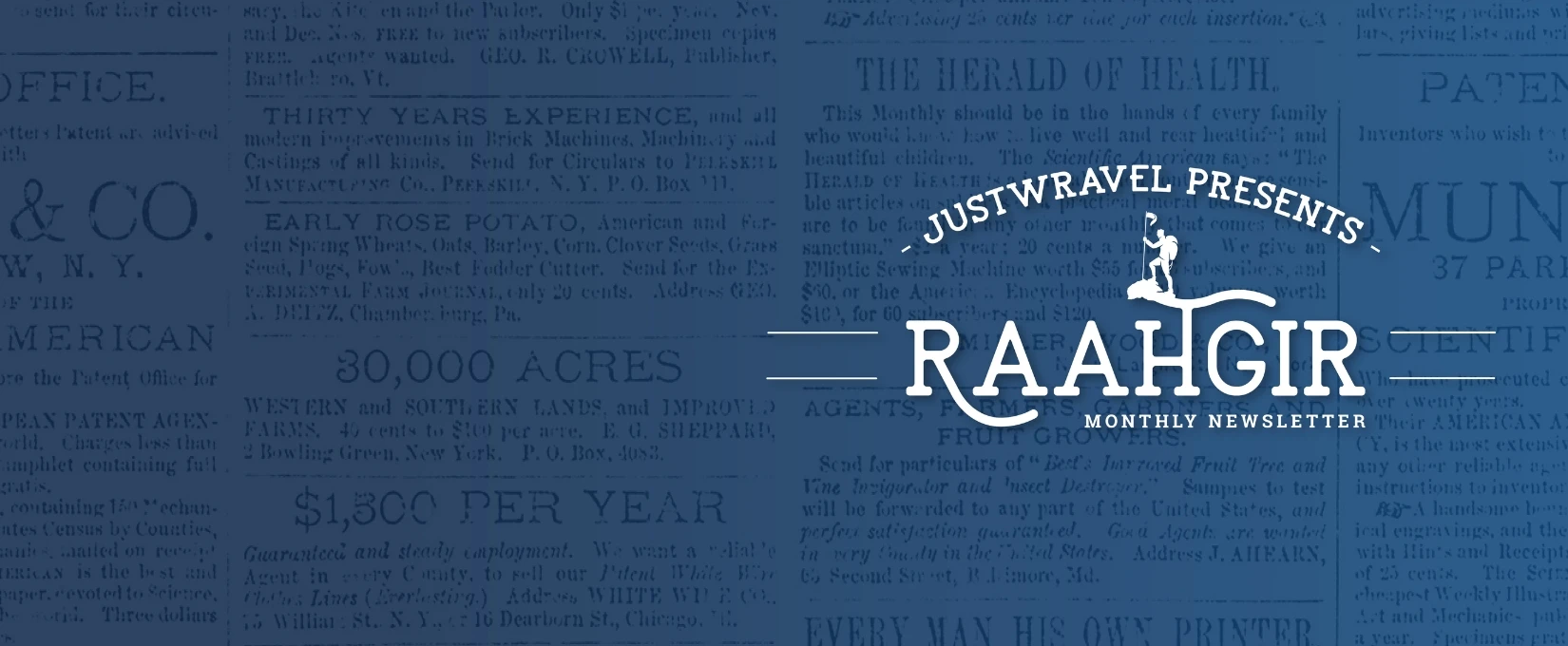
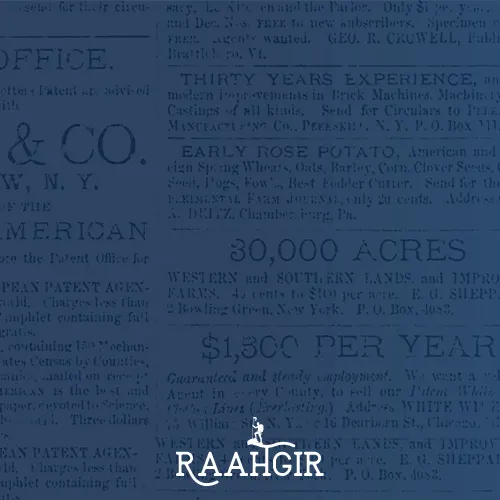
Newsletter
Sign up now!
Be the first one to know all about the Exciting Offers, Travel Updates and more.

B-42, 2nd Floor, Tower- B, The Corenthum, Block A, Sector 62, Noida, Uttar Pradesh 201301
© 2015-2025 JustWravel Pvt. Ltd.

